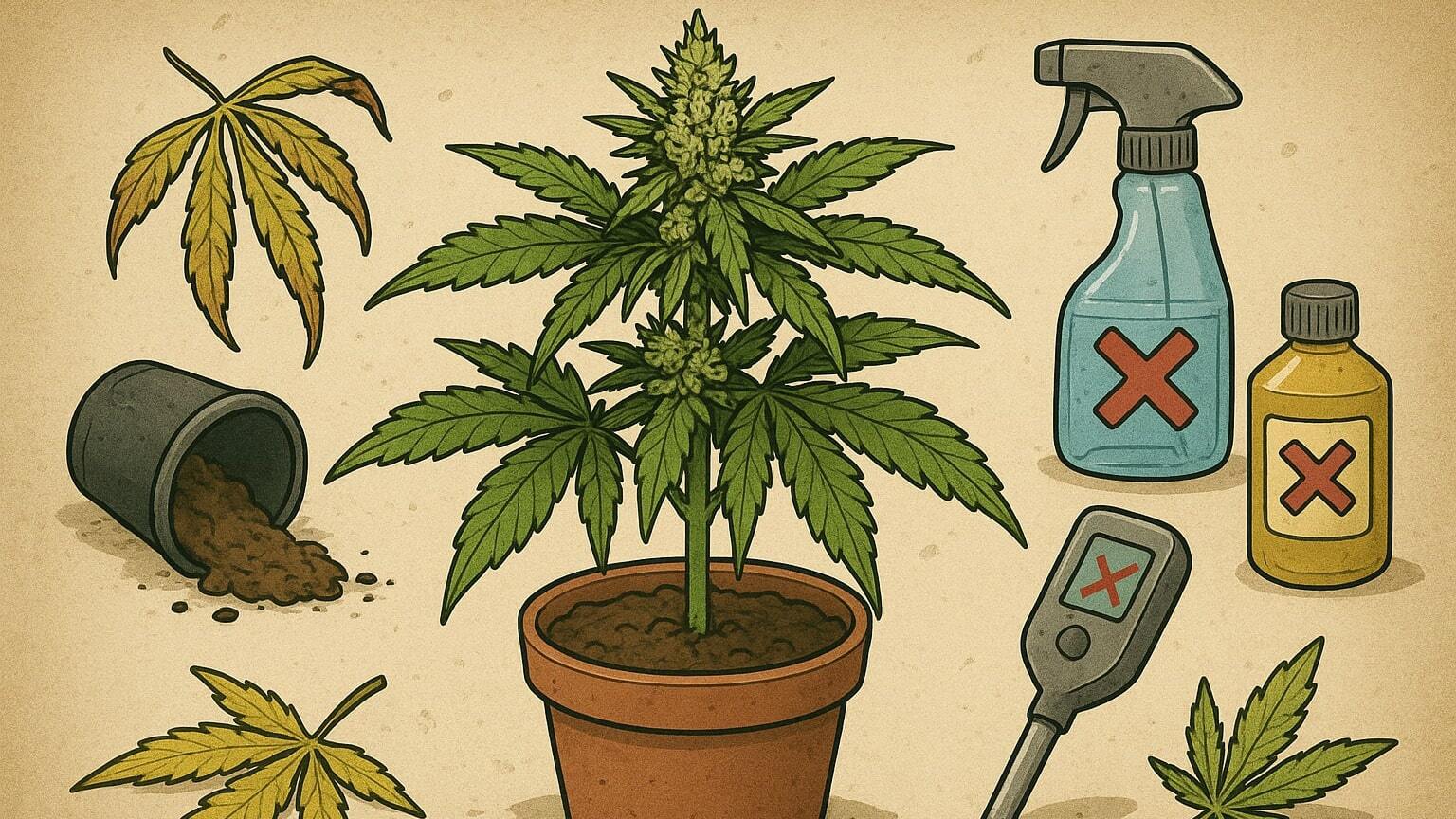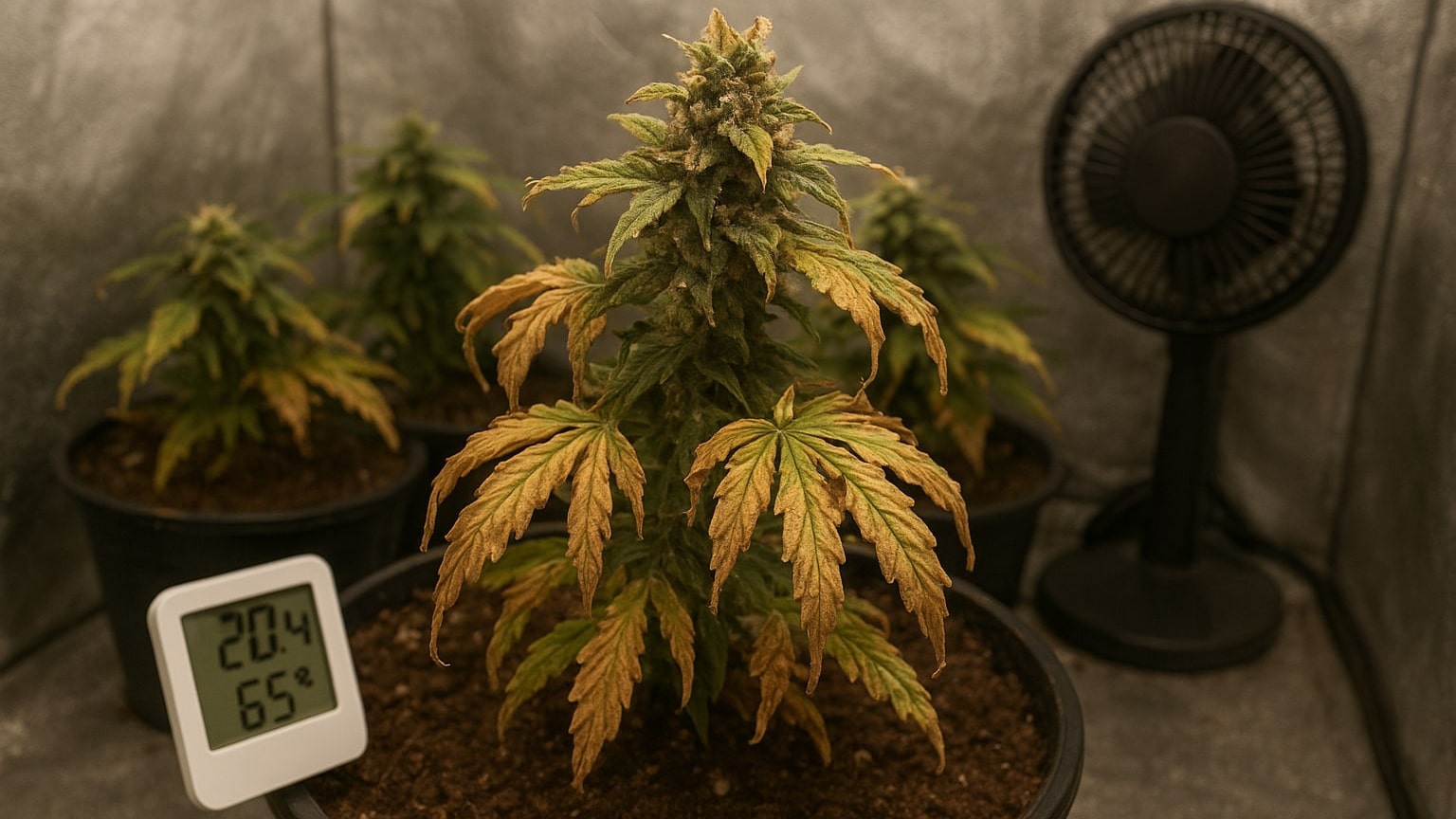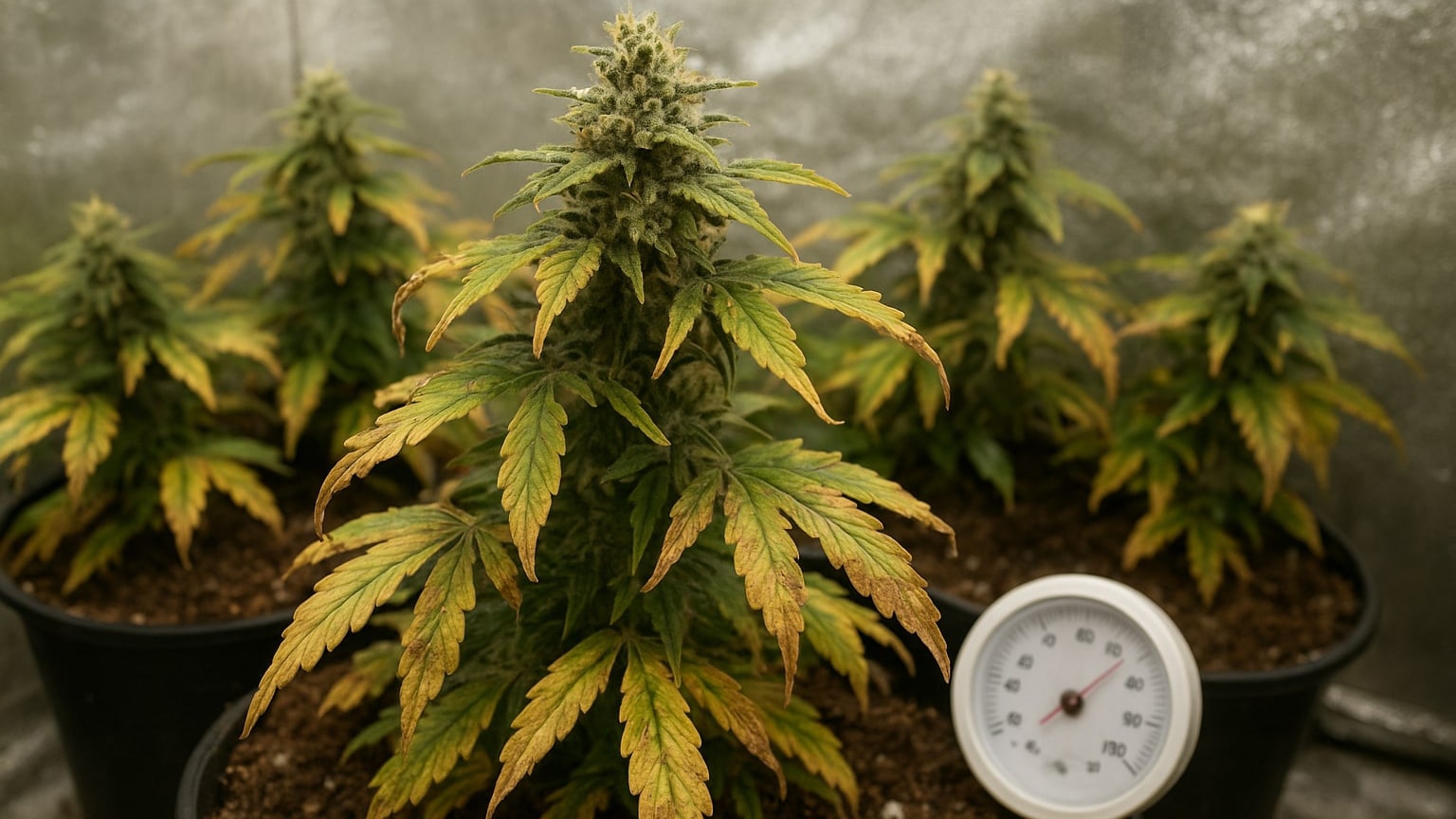
Mistakes in growing marijuana: what ruins the first grow
Mistakes in growing marijuana are most often made by beginners who do not know the basics of growing. Even the highest quality seeds and a good box will not save you from a poor harvest if you make critical mistakes in care. Let's take a look at some typical problems and give you some tips on how to grow cannabis without losses.
Growing for beginners: common mistakes when growing for the first time
The first grow is the most difficult stage for a beginner. Lack of experience, theory, and patience leads to mistakes that can completely ruin the harvest. Here are the main mistakes that novice growers make:
• Incorrect variety selection. Beginners often choose photoperiod varieties without realizing that they require strict control of the light regime (changing from 18/6 to 12/12). This prevents the plants from flowering. The optimal choice is autoflowering feminized varieties. They are smaller in size, grow quickly, and flower automatically, which simplifies the task.
• Lack of basic knowledge. Beginner growers make mistakes as early as the germination stage: they bury the seeds too deep, overwater them, and use untested light sources or soil. The importance of ventilation, humidity control, and temperature control is also often overlooked.
• Disregard for the light regime. Lighting is one of the key factors. During vegetation, an 18/6 regime is required, and during flowering, a 12/12 regime is required. An incorrect regime slows down growth and sometimes leads to a complete absence of buds.
• The desire to “improve” without understanding. Newbies experiment with LST, feeding, pruning, without understanding the essence of the processes. The result is stress on the plant, stunted growth, stem deformation, or breakage.
• Excessive concern. Watering every day, constantly moving pots around, feeding every other day—all of this causes stress. Growing requires patience: sometimes it is better not to interfere than to overdo it.
Advice from experienced growers: before you start growing, make a clear plan — from seed selection to harvest. Learn the basics of lighting, watering, pH, and fertilizers. Do less — but do it better.

Light and ventilation: how not to kill a plant during vegetation
Errors during the first grow are often related to lighting. Incorrect lighting for cannabis is a common cause of elongated and weak plants. Use LED lamps with the right spectrum. Blue for vegetation, red for flowering.
• How to improve ventilation in the box:
• Install an exhaust fan and air intake.
• Use a dehumidifier in high humidity conditions.
• Don't forget about a circulation fan.
Humidity control is important — excess humidity causes mold, while insufficient humidity causes stress in plants.
Soil and pH: mistakes with fertilizers when growing
Poor soil for marijuana is another common mistake. Use a light substrate with coconut or perlite. It breathes well and provides oxygen to the roots.
Common mistakes with fertilizers when growing:
• Fertilizing too early.
• Over-fertilizing with mineral mixtures.
• Lack of pH control.
The wrong pH for cannabis blocks nutrition. The optimal pH for soil is 6.0–6.5, and for hydroponics, 5.5–6.2.
Signs of fertilizer overdose:
• Dry leaf edges.
• Dark green foliage.
• Slow growth.
pH and elemental bioavailability
| Element | Best pH absorption |
| Nitrogen (N) | 6.0–7.0 |
| Phosphorus (P) | 6.2–7.2 |
| Kalium (K) | 6.0–7.0 |

Watering and drainage: how to avoid overwatering when growing plants
Overwatering during cultivation leads to root rot. Always monitor the weight of the pot: if it is heavy, do not water it. Proper watering and drainage are the keys to health.
Tips:
• Use pots with drainage holes.
• After watering, the water should drain down.
• Check the top layer of the substrate before the next watering.
Important! Cannabis tolerates mild drought better than waterlogging.
The impact of stress and training: how not to overdo it
Twisting and LST (low stress training) help increase yield, but require care. Damage to the stem is a common mistake. Do not bend if the stem is still soft or, conversely, has already become woody.
Examples of stress:
• Sudden changes in temperature.
• Transplanting without preparation.
• Pruning during the flowering stage.
Each stress factor delays growth, especially in autoflowering varieties.
Flowering and harvest: why buds are not growing
Why isn't cannabis flowering? Reasons:
• Too long daylight hours (more than 14 hours).
• Stress in the early stages of flowering.
• Over-fertilization with nitrogen.
It is also worth remembering: photoperiod plants will not flower without a 12/12 cycle change.
Why aren't the buds growing? Possible reasons:
• Lack of potassium and phosphorus.
• Weak light.
• Lack of CO₂.
Harvesting under a microscope is a reliable way to determine maturity. Look at the trichomes:
• Transparent — too early.
• Milky — peak THC.
• Amber — more CBN, relaxing effect.
How to avoid poor harvests for beginners
Poor harvests among beginners are the result of a number of typical mistakes that can be prevented during the preparation stage. Competent planning and adherence to basic growing rules significantly increase the yield of buds from each bush.
• Choosing the right variety. Yield depends directly on genetics. Photoperiod strains tend to produce more, but require skill. Autoflowering strains are easier to care for, but under the right conditions they can also produce decent results. Beginners should start with proven feminized autoflowers with high potential.
• Lighting control. Insufficient or incorrect light spectrum is the cause of poor yields. Use full-spectrum LED panels, maintain a distance from the tops of the plants, and observe an 18/6 or 12/12 light cycle. Light that is too weak or too powerful causes stress and inhibits growth.
• High-quality soil and drainage. Poor soil for marijuana, with clay or without aeration, reduces root development. Add perlite, coconut fiber, or agroperlite to the substrate. Make sure the pots have drainage holes—this will prevent overwatering and rot.
• Balanced diet. Over-fertilization and nutrient deficiency are equally harmful. During vegetation, plants need nitrogen, and during flowering, they need phosphorus and potassium. Use fertilizers according to the instructions and observe the reaction of the bushes. Signs of fertilizer overdose: curling leaves, burnt edges, stunted growth.
Climate maintenance. Optimal temperature is 22–26°C during the day and 18–21°C at night. Humidity is 60–70% during vegetation and 40–50% during flowering. Poor ventilation, heat, or dryness are common causes of weak inflorescences.
Recommendations:
1. Start with autoflowering and feminized strains.
2. Use proven lighting and follow an 18/6 schedule.
3. Keep the pH within acceptable limits.
4. Perform minimal LST or no training at all.
5. Watch for signs of stress.

Tips for your first grave: what is important to remember
Tips for your first grow:
• Keep it simple. One bush, one type of fertilizer, one light.
• Record the stages. Photos and notes will help you analyze mistakes.
• Don't rush the harvest. Better a little later than unripe raw materials.
Growing tips:
• Never use fertilizer “by eye.”
• Rinse the soil if you notice signs of over-fertilization.
• Don't touch the bushes with your hands unnecessarily — this causes stress.
Conclusion
Mistakes in growing marijuana are a natural part of every grower's journey. The main thing is to learn from them and strive for consistency. Growing marijuana at home is a process that requires discipline and observation. A competent approach will reward you not only with a harvest, but also with valuable experience.

